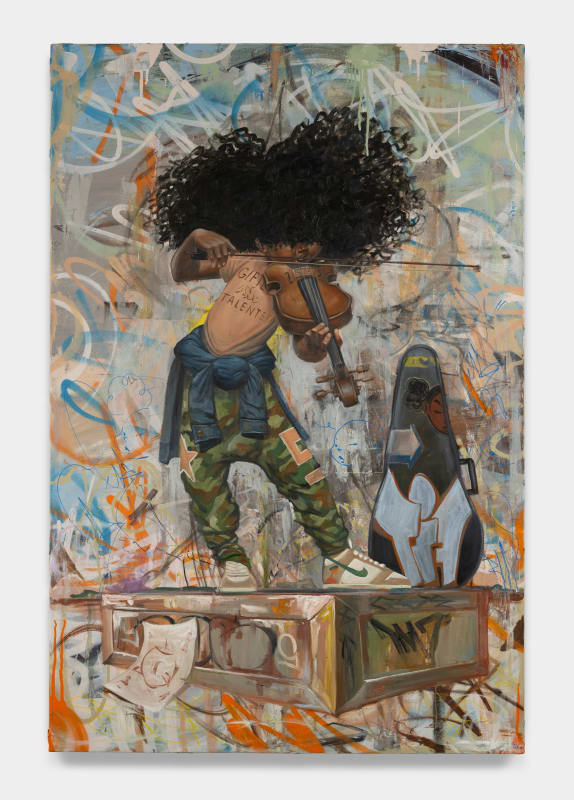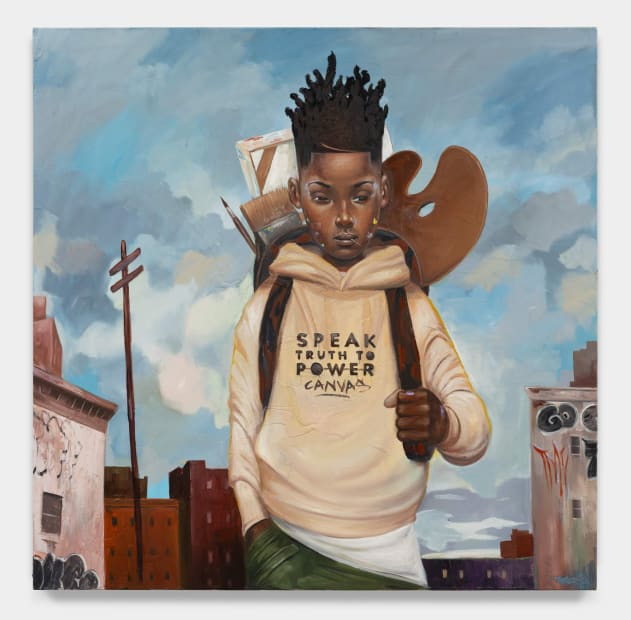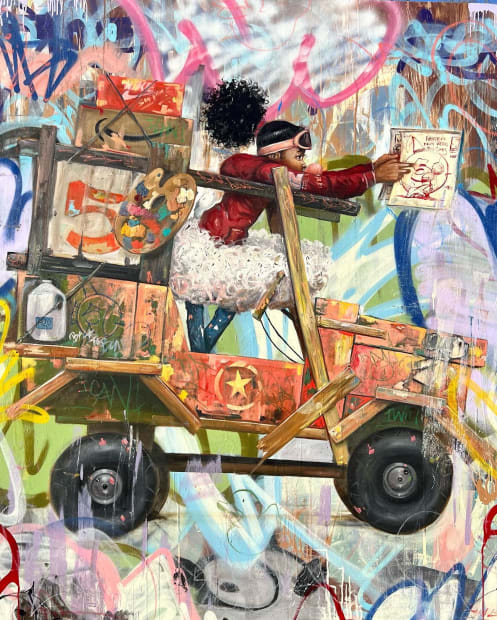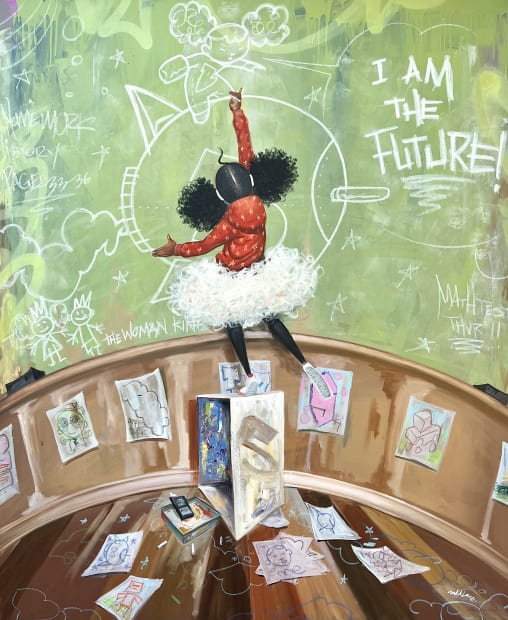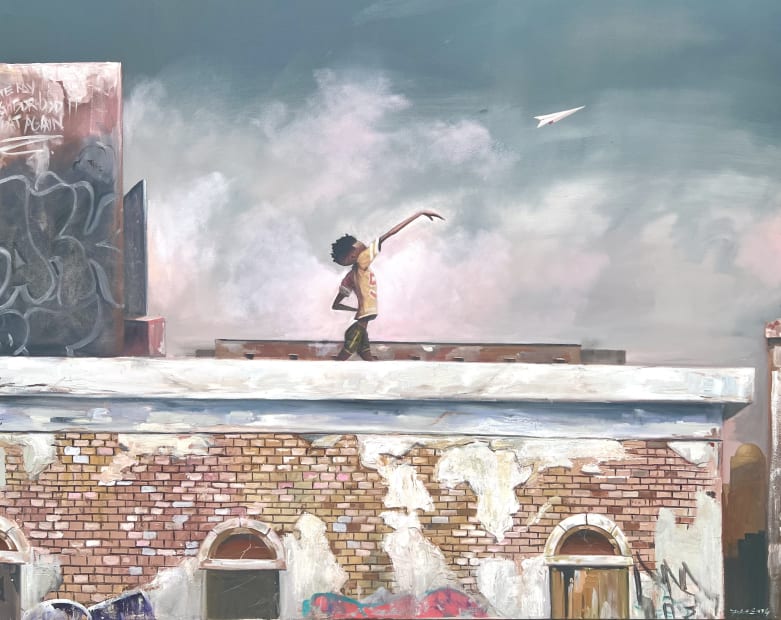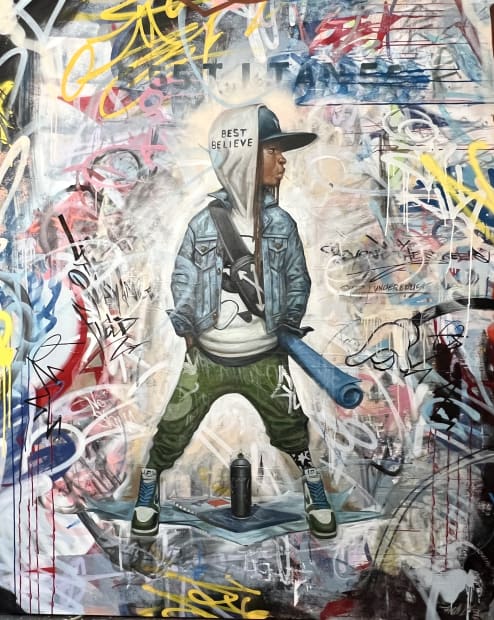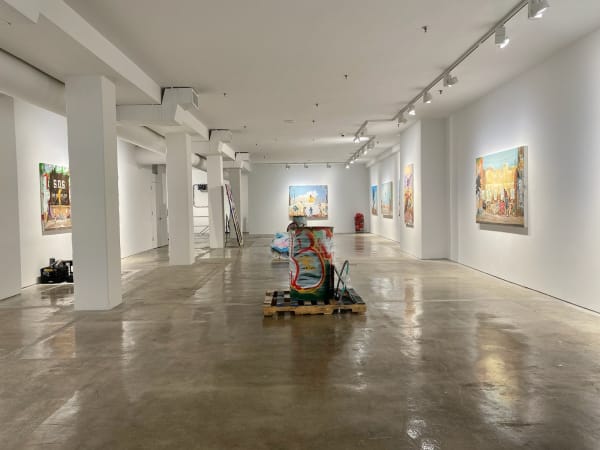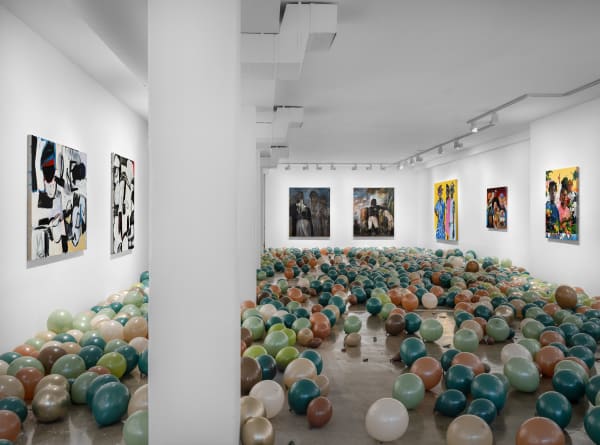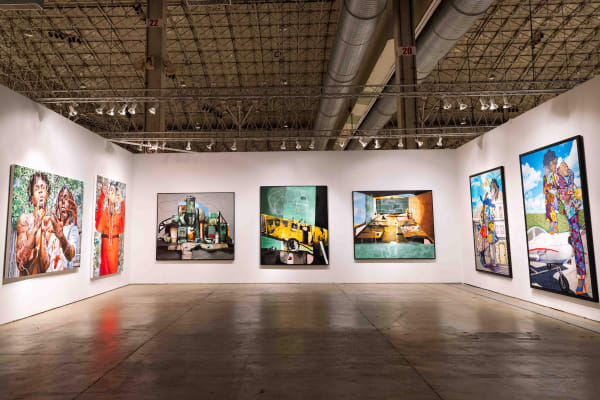Frank Morrison
Frank Morrison constructs a compendium of everyday life and the lived African
American experience. Through painting, and illustration, he tells the unique stories
of childhood, popular culture, and community through his scenes of everyday life
in the urban environment. Building upon the foundations of the Neo-Mannerist
painters, he has formulated his signature style, blending vibrant, exaggerated
human forms with touches of his past working in the realms of graffiti and street
art. Expressive control of spray paint as well as adding tags and patterns transform
these whimsical scenes. His work is imbued with modern iconography that reflects
the state of life and culture at the time of their creation, reflections for us and
future generations.
His style developed over years of fusing together his inspirations. Growing up in
the 1980s, the hip-hop counterculture of dance and graffiti art offered a newfound
sense of control over the story and culture within the African American
community. Morrison could experiment with color and form. The fluidity of his
approach carried over into his figurative work. Deeply inspired by the greats
throughout art history, he became enamored with the artistic genius he
encountered as a young man visiting the Louvre, he added to his artistic
foundations with the techniques of the masters that came before him. The
Renaissance and Raphaelites introduced him to the drama of oil painting. Goya
and El Greco taught him to manipulate his scenes to encapsulate expressive forms
with social critiques.
He found himself inspired by the work of the African American Neo-Mannerist
painters. Pioneering artists like Ernie Barnes subverted realism with the unseen
daily life of being Black in America in the mid-20th century. Morrison was
captivated by the way they created otherworldly, elongated human forms and color
palettes that evoked a resonating sense of culture and community. He incorporated
elements of the Pop Artists, such as cultural commodities, large scale, and intense
colors, to add to the conversations of modernity he evoked. He combined the
documentary approach of the early 20th century Ashcan School, examining his
surroundings, and adding in components from his favorite illustrators, such as Al
Hirschfeld and Miguel Covarrubias. He built upon these artists, translating this
aesthetic through a modern lens, looking at his own childhood memories, the
advances of Black culture, and his version of the everyday.
-

Subject Matters
Group Show 3 May - 15 Jun 2024 SohoWhat does it mean for a person, a community, or a life to matter? Today, we encounter the politicization of identity that pits us against one another rather than amplifies...Read more -

Wonder World
Frank Morrison 18 Nov - 31 Dec 2023 BrooklynThe innocence of childhood allows our imaginations to envision futures that are larger than life. The ability to be anyone, do anything, and experience all that the world has to...Read more -

Brilliance Behind the Line
Frank Morrison 17 Nov - 30 Dec 2023 SohoArbitrary lines build our nations, map our territories, and divide our cities. They allow indifference and prejudice to be made manifest through concrete and contracts. Faced with an institutionalized exile,...Read more -

In Plain Sight
Group show 1 Sep - 14 Oct 2023 SohoIn Plain Sight brings together a diverse selection of contemporary artists who have worked around the United States and abroad and share their distinctive perspectives on the lived experience of...Read more
